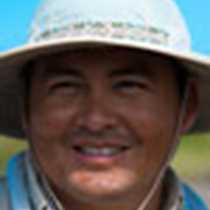Fernandina and Isabela Islands
One more exceptional day in paradise! Our first outing began early in the morning at 6:00a.m.; our guests wanted to have as much time as possible on the youngest island in the Galápagos. Fernandina Island is the third largest island in the Galápagos, with an area of 248 square miles. The island is the westernmost in the archipelago and is an active shield volcano that last erupted in April 2009.
Due to its recent volcanic activity, the island does not present much plant life and has a mostly rocky surface. Our guests were taken to see the wildlife at Punta Espinoza, which is a narrow stretch of land where hundreds of marine iguanas gather in large groups on pahoehoe lava flows. The most impressive and prehistoric flightless bird, the flightless cormorant, inhabits this island. Snakes, sea lions and Galápagos sea lions were spotted along the shoreline. Fernandina is considered the most pristine of the Galápagos Islands and has had no species of mammals introduced, which sets it apart from most of the other islands in the archipelago.
The morning experience finished with a refresing aquatic activity; many of our guests went snorkeling to enjoy the underwater realm. Different kinds of fish, sea stars, sea urchins and sea turtles, as well as sea lions, were the main attraction.
In the afternoon everybody was excited because we were visiting one of the largest islands in the Galápagos Archipelago, Isabela, which has an area of 1,792 square miles. As expected, the afternoon outing was impressive. We enjoyed a peaceful zodiac ride along the coastline; we observed dozens of green Pacific sea turtles, Galápagos penguins and graceful Galápagos sea lions that were swimming around our zodiacs. In the distance we spotted the other species of sea lion that came from South America: the Galápagos fur seal. This kind of sea lion likes to form small colonies on rocky shores, mostly on the western islands where the water is colder. Furthermore, we found different species of shore birds such as brown noddies, blue-footed boobies, Nazca boobies and brown pelicans. The trip finished with a great view of a pod of bottlenose dolphins swimming by the coast of Isabela Island.
Our afternoon effort pays off! We continued our navigation along the coast of Isabela Island, which offers a bizarre volcanic landscape, until we crossed the Equator line. All of us gathered on deck to celebrate our successful and unforgettable day while an imposing sun set over the horizon.




